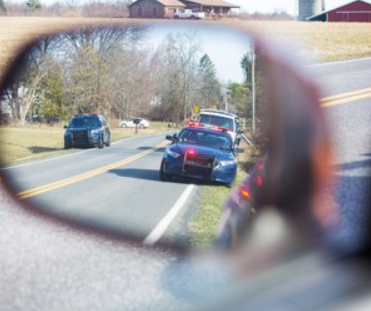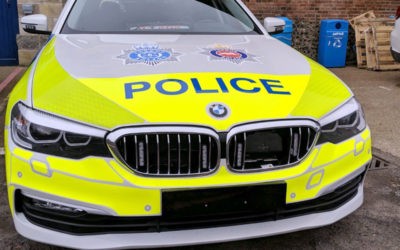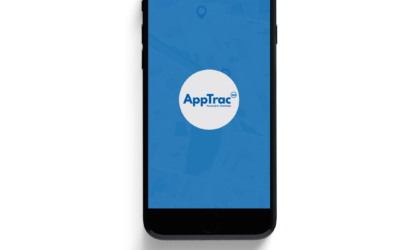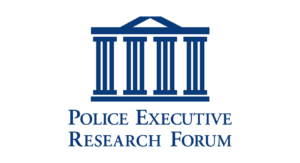Answering the call for police reform: De-escalation tactics through training and technology
3 ways law enforcement agencies can manage high-risk vehicle events and rebuild trust with the community
Sponsored by Pursuit Response
By Laura Neitzel, Police1 BrandFocus Staff
Events in 2020 and early 2021 have led to the deterioration of trust between law enforcement agencies and the communities they serve, sparking important conversations around police reform. With law enforcement tactics under increased scrutiny, agencies are reevaluating their policies and procedures, especially around use of force such as officer-involved shootings, uses of electronically controlled devices (“stun guns”) and the use of chokeholds.

But pursuit tactics – which can be equally lethal – have not received the same degree of attention, despite the significant risks to suspects and innocent victims and continued policy critique nationwide. Unfortunately, recent events like the murder of three law enforcement officers in Puerto Rico following a pursuit have also shown how vehicle crimes can escalate into tragedy.
The decision to pursue is often driven by policy, training and the technology available to the agency. Should a pursuit ensue, the goal becomes to minimize risk by making the pursuit unnecessary or bringing it to a quick and safe conclusion. Fortunately, training and technology can help law enforcement in de-escalating high-risk vehicle pursuits.
DE-ESCALATION TRAINING IS A CRUCIAL PART OF DRIVER TRAINING
Many law enforcement officers and agencies may associate pursuit training solely with driving skills and may not be aware of the important role it plays in de-escalation. Because high-speed pursuit driving is a complex task with both physical and emotional components, it should be treated like other uses of force, and training for pursuit events should include de-escalation skills and techniques.
“Almost all vehicle use-of-force incidents commence with a driving response that sets the tone for the rest of the situation,” said Chuck Deakins, lieutenant commander (retired) and lead specialist for simulation training at FAAC. “Driving simulators provide the environment to practice and train for a controlled and de-escalated response to crisis situations. These driving de-escalation skills and techniques learned by students for pursuit response in the driver training simulator transfer directly and should be applied to field situations.”
Driving de-escalation skills must be two-fold – both preparing the officer for the intensity and the fluidity of a pursuit situation that requires fast action but also preparing the officer to de-escalate the situation when arriving on the scene.
This is no easy task. In a matter of moments, the situation may change from a pursuit to apprehension, requiring the officer to master not only the driving skills needed to navigate the pursuit tactically, safely and within policy, but also to accurately assess the potential risks and dangers of the apprehension and approach it with the right attitude, judgment and decision-making skills.
The skills taught in driver response training are tactical, practical and judgmental. Some skills, like putting on a seatbelt, activating emergency lights without looking, monitoring speed constantly and communicating via radio, should become automatic enough through practice to become second nature.
Other skills – like navigating a curve at high speeds, crossing through a busy intersection or coming under fire by a suspect – cannot safely be practiced in real life. That’s where driving simulator technology becomes essential by providing a visceral experience in a safe setting, helping to cement the lessons in both body and mind.
Technology like FAAC’s VITALS interactive assessment application that records training performance key parameters. In addition to practicing driving skills, the simulator enables active and engaged instructors to identify the student’s attitude and approach through complicated, intense and critical situations like emergency response or pursuits.
“Too often, instructors view the simulated driving environment the same as the driving track – only useful for teaching driving skills,” said Deakins. “The truth is that the simulated environment provides so much more opportunity to identify attitude, judgment and decision-making skills of students through technology such as replay, picture in picture and virtual assessment of a student’s decisions, regardless of the instructor presence.”
“Revising a use-of-force policy does not translate to organizational change. Truly effective training is what truly brings about change,”said Deakins. “Discussions around police reform should include de-escalation as a critical component of driver training, especially in light of the danger that pursuits can pose to officers, suspects and citizens alike.”
CONNECTED VEHICLE TECHNOLOGIES CAN BRING PURSUITS TO A QUICK AND SAFER OUTCOME
Pursuit may be one of the deadliest use-of-force tactics, as it may increase injury to suspects and law enforcement, as well as innocent bystanders. Reform-minded agencies should modernize their training, policy and tactics to leverage available location assistance technologies as another tool to improve outcomes.
Suspected stolen vehicles account for almost 20% of pursuits, according to research from Pursuit Response. Under certain circumstances, connected vehicle technologies, like OnStar’s connected services can be used to quickly locate and recover stolen vehicles if such services are active in a particular vehicle, eliminating pursuits altogether or bringing them to a speedy and safer outcome when initiated.
In fact, each month OnStar responds to over 1,500 stolen vehicle assistance requests in North America. In many cases, officers are able to locate stolen vehicles with the assistance of OnStar advisors who can pinpoint the location of GM vehicles enabled with OnStar’s vehicle location assistance technologies and the appropriate active OnStar service plans. Knowing the location of the stolen vehicle gives law enforcement agencies the situational awareness needed to strategize a safe vehicle recovery.
Should a pursuit be underway and if the vehicle is properly equipped and has the appropriate active service plan, OnStar’s Stolen Vehicle Slowdown (SVS) technology can be used to de-escalate a pursuit by first allowing law enforcement to track the vehicle and plan a safe apprehension. When traffic, weather and location conditions are appropriate and safe and the officer has made positive identification of the stolen vehicle, the OnStar advisor can activate SVS, automatically slowing the stolen vehicle down to an idle speed of 3 to 5 mph with steering and braking functions intact, making for an easier and safer apprehension of the suspect and recovery of the stolen vehicle, as in this recent incident in Tennessee. OnStar can also remotely block the ignition from being restarted once it has been shut off, stopping the thief in their tracks. These technologies may not only aid in suspect apprehension and vehicle recovery, but may also decrease the time spent investigating an incident.
HOW TO MITIGATE THE RISKS INHERENT IN PURSUITS
Every year, hundreds of innocent citizens are killed or injured in high-speed pursuits. While the fleeing suspect certainly bears responsibility, these incidents can result in millions of dollars in lawsuits and legal settlements for police agencies.
Many of the collisions that result in innocent lives being taken could be avoided with concerted efforts to de-escalate pursuit events or to avoid them altogether. In addition to police training, pursuit management technology from StarChase can help.
StarChase’s GPS tagging and tracking system allows suspects to be traced and apprehended without being pursued at dangerous speeds. In fact, the tags are shown to change suspect behavior stemming from pursuit-related events. An NIJ-funded field test that studied StarChase technology found that “on average, a tagged fleeing suspect slowed to within 10 miles of the posted speed limit in less than 2 minutes, reducing the risk for a crash.”
Additionally, data confirms a higher apprehension rate (85%) with StarChase compared to traditional (and riskier) pursuit-ending methods like the PIT maneuver or stop stick (72%). If needed, the suspect vehicle data can also be shared with neighboring jurisdictions, enhancing interagency collaboration and community relations.
Tagging with StarChase allows for a reduced but effective response in the use-of-force continuum, allowing agencies to facilitate safer outcomes by allowing officers the opportunity to evaluate the situation and respond tactically.
In many cases, StarChase reduces the risk for the pursuing officers – and, by extension, the suspects and the public – by stopping pursuits before they begin. StarChase GPS tracking technology has even won praise from the American Civil Liberties Union, whose report stated that the technology “has the potential to obviate the need for high-speed pursuits by police cars through cities and towns, which are dangerous and kill hundreds each year, with a third or more of those fatalities being innocent bystanders.”
KEEP THE PROMISE TO PROTECT AND SERVE
A combined recipe of training, policy and technology can help law enforcement agencies minimize the risks inherent in pursuits. It is incumbent on forward-thinking agencies to employ all the available tools necessary to reassure the public that law enforcement goals are to protect and serve the community, not put innocent citizens at risk. A recent incident in Minneapolis in which both StarChase and OnStar technologies were used to successfully avoid a high-speed pursuit and to recover a stolen vehicle shows how technology, training and policy reforms can lead to safer outcomes.
By making policy, technology and training vital components of their de-escalation tactics, law enforcement agencies can build public trust by exercising and exhibiting wise judgment and employing measured but effective responses to high-risk pursuits.
Get more info from Pursuit Response.




